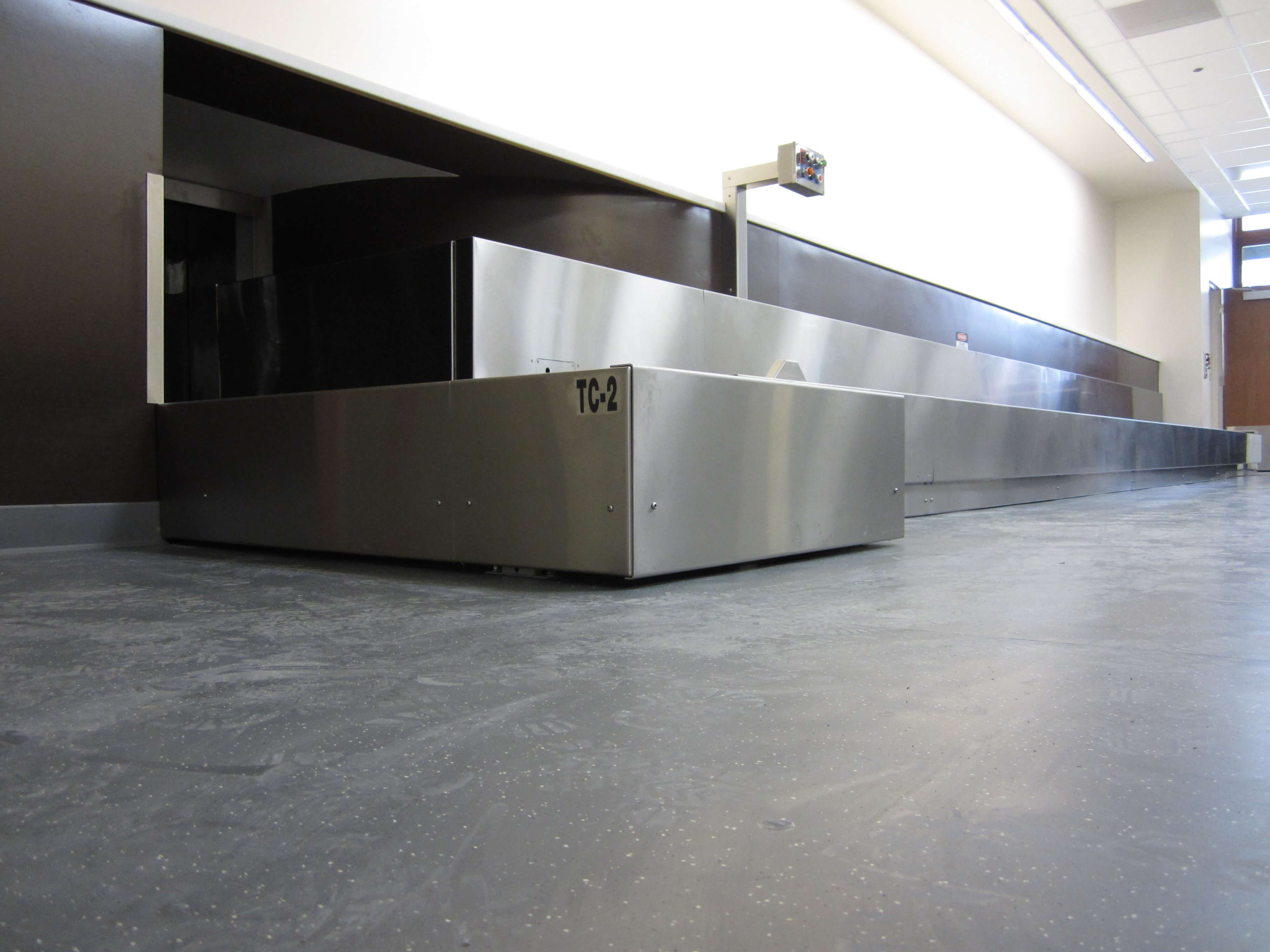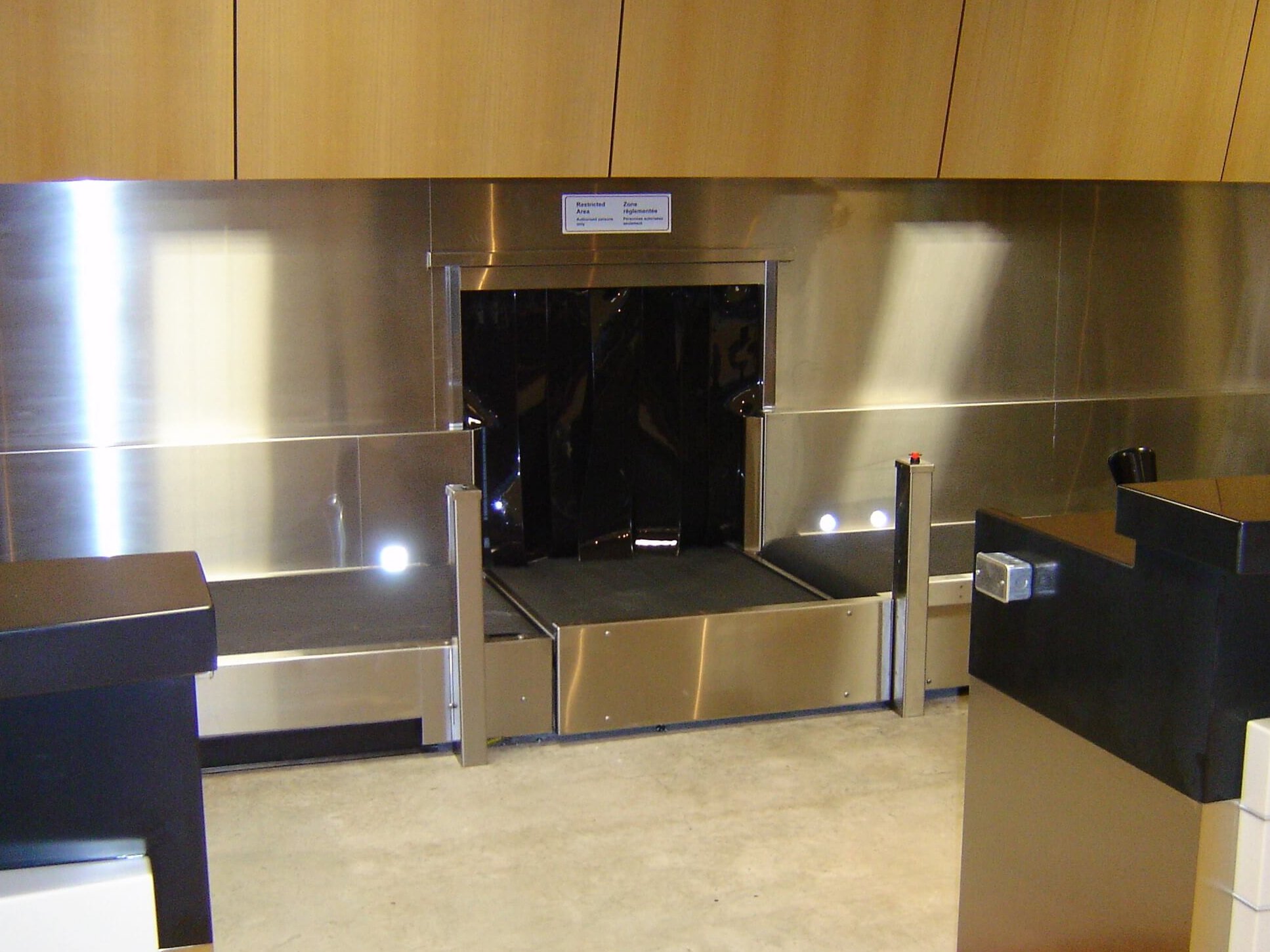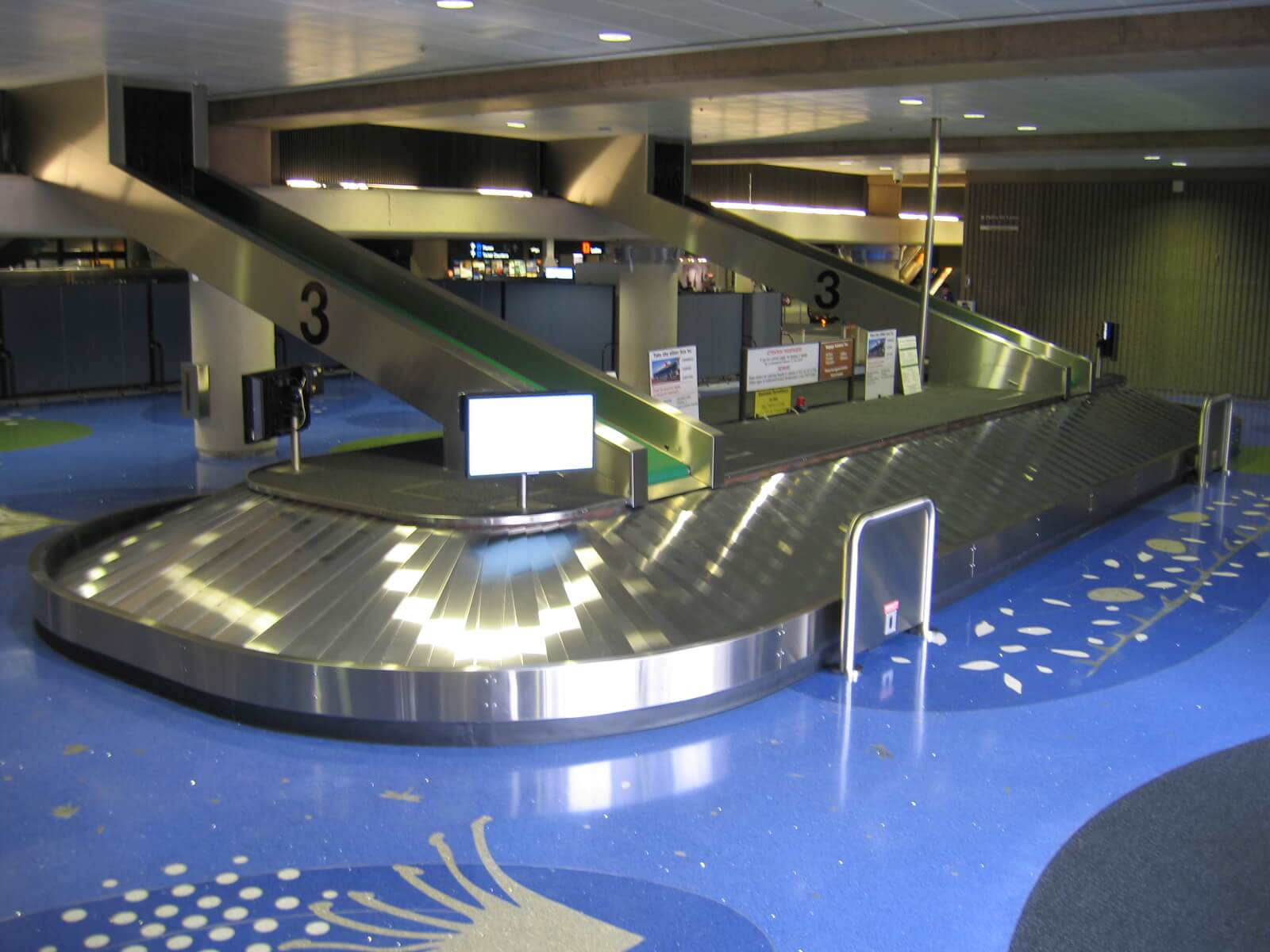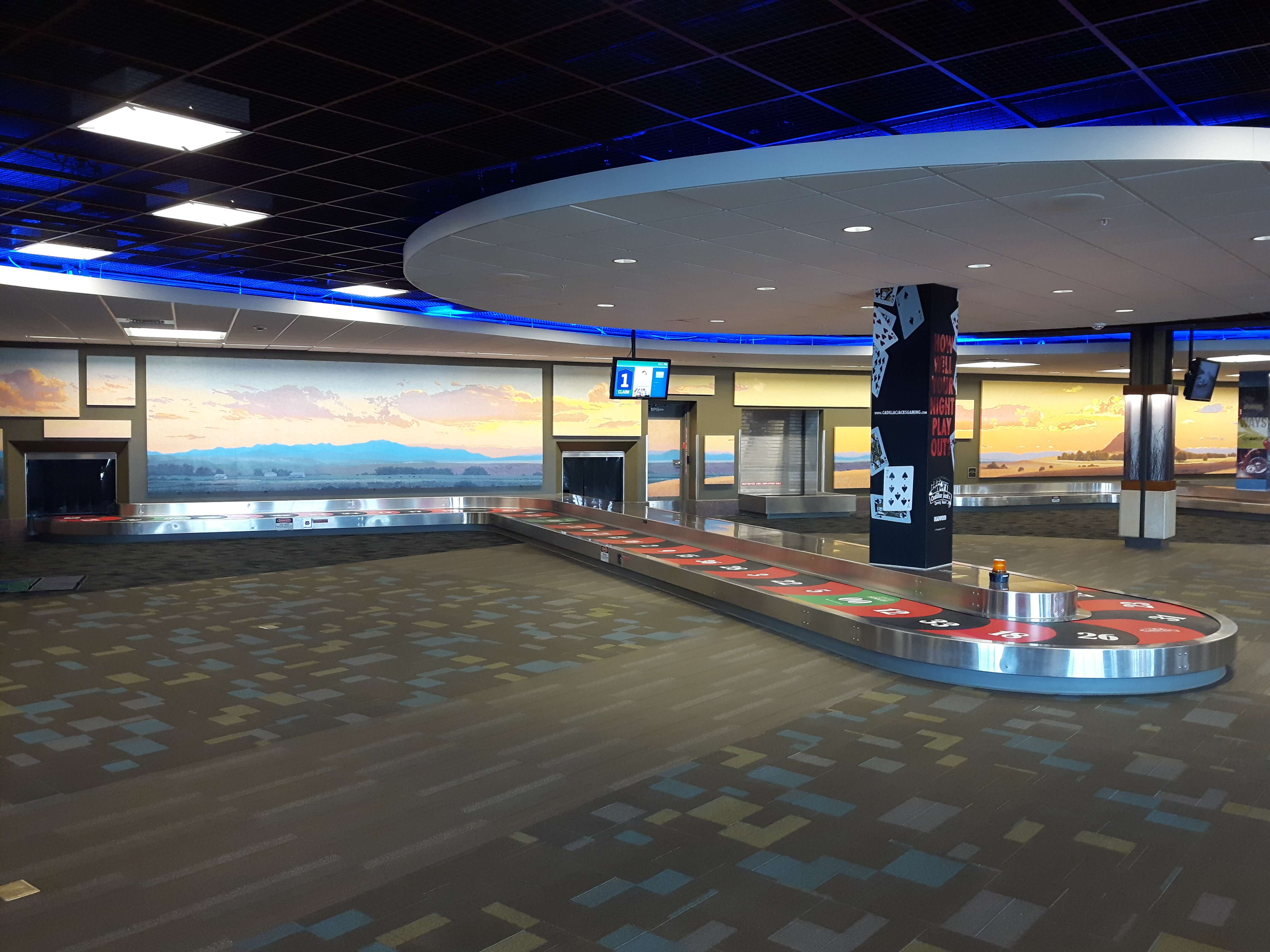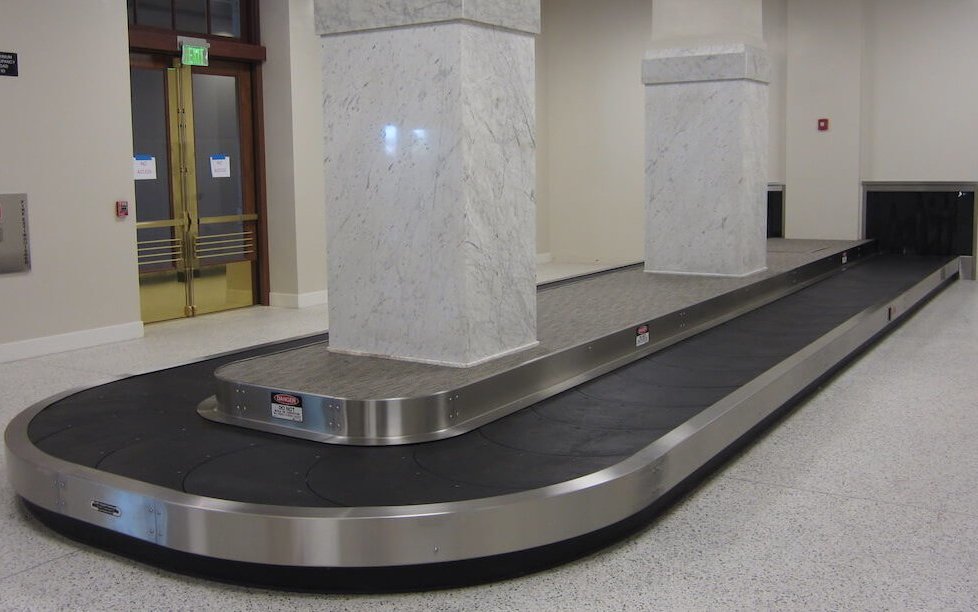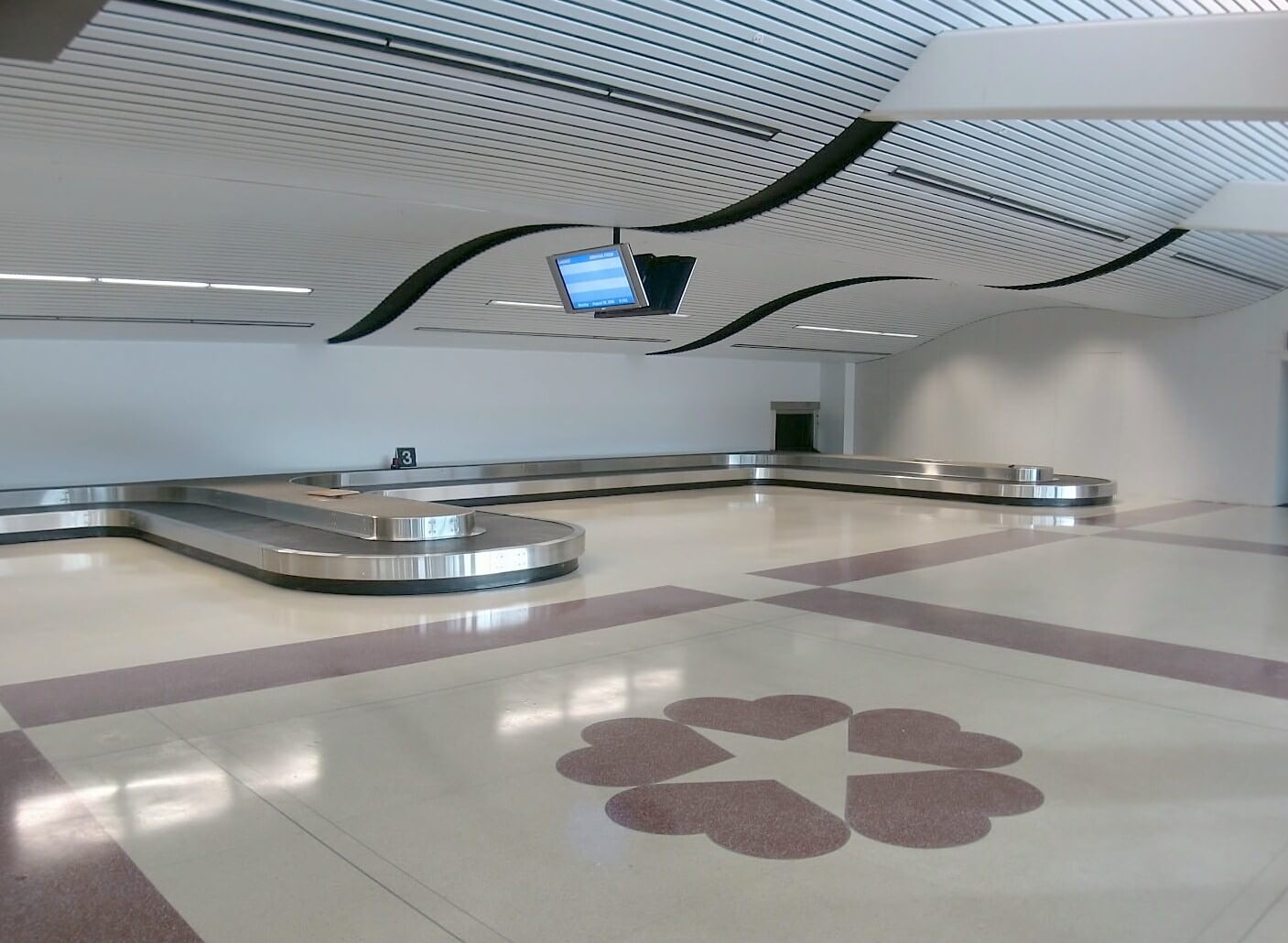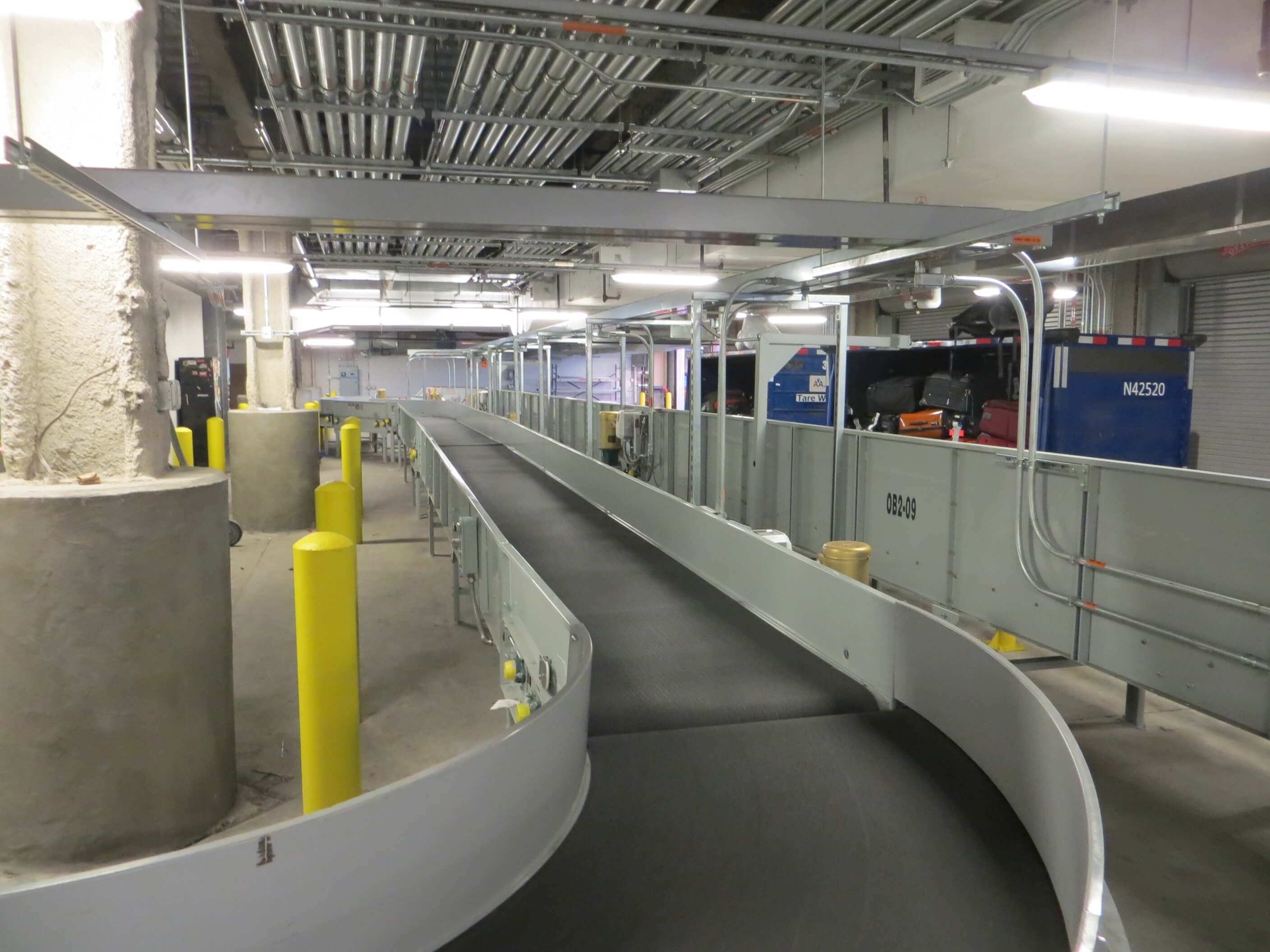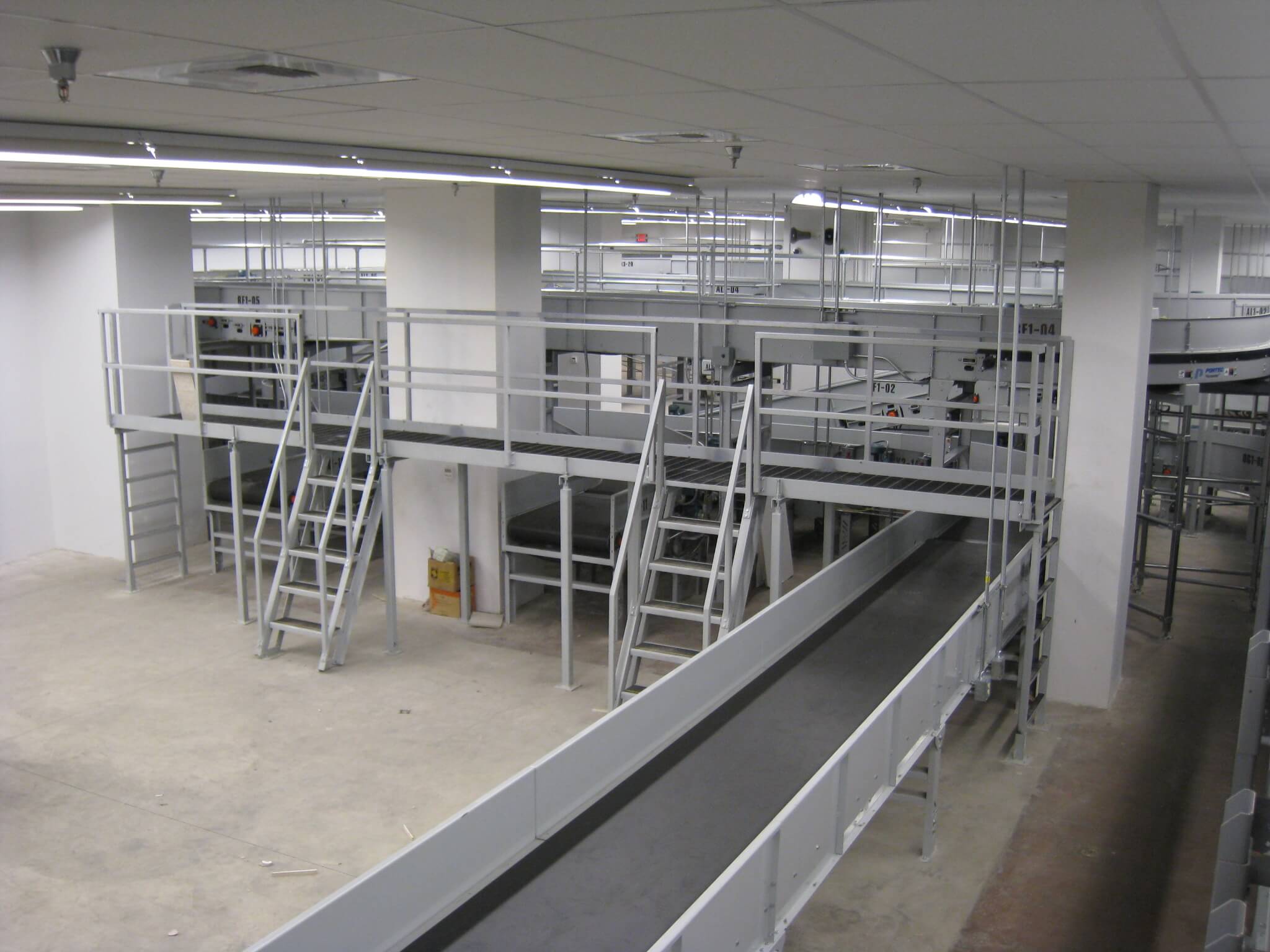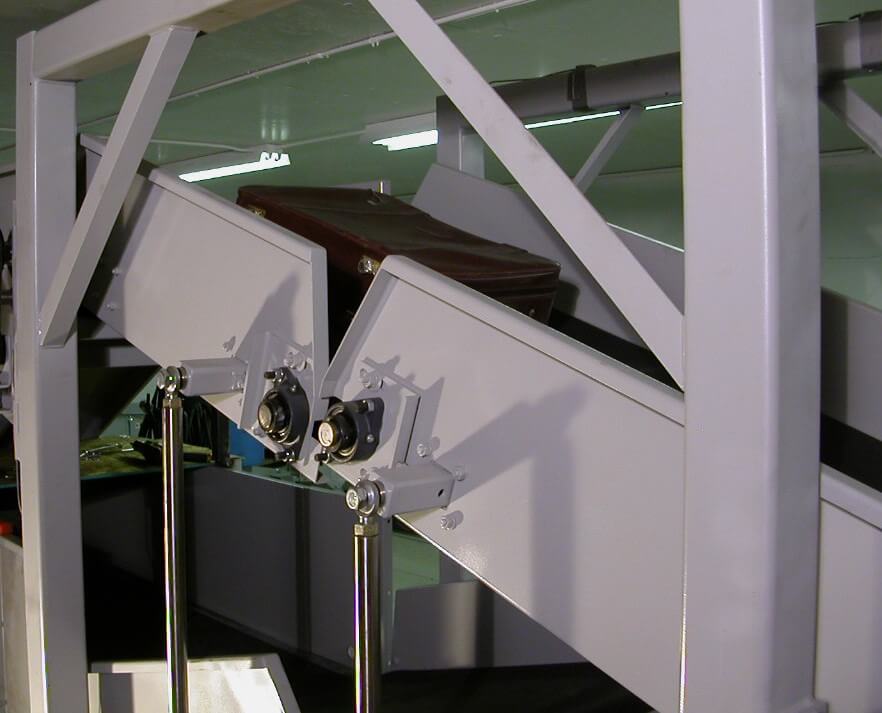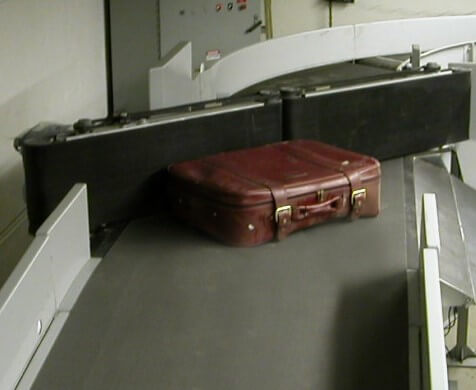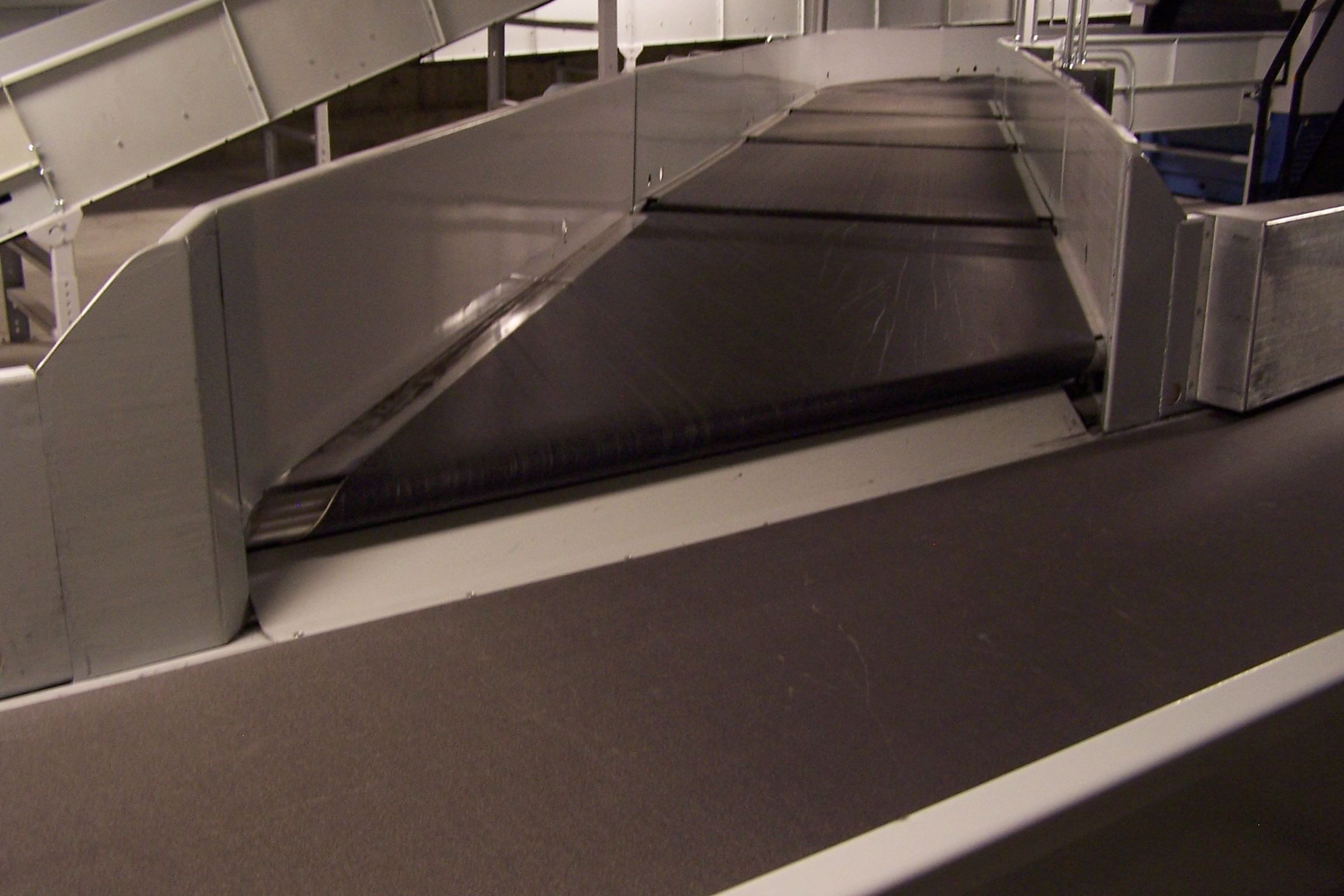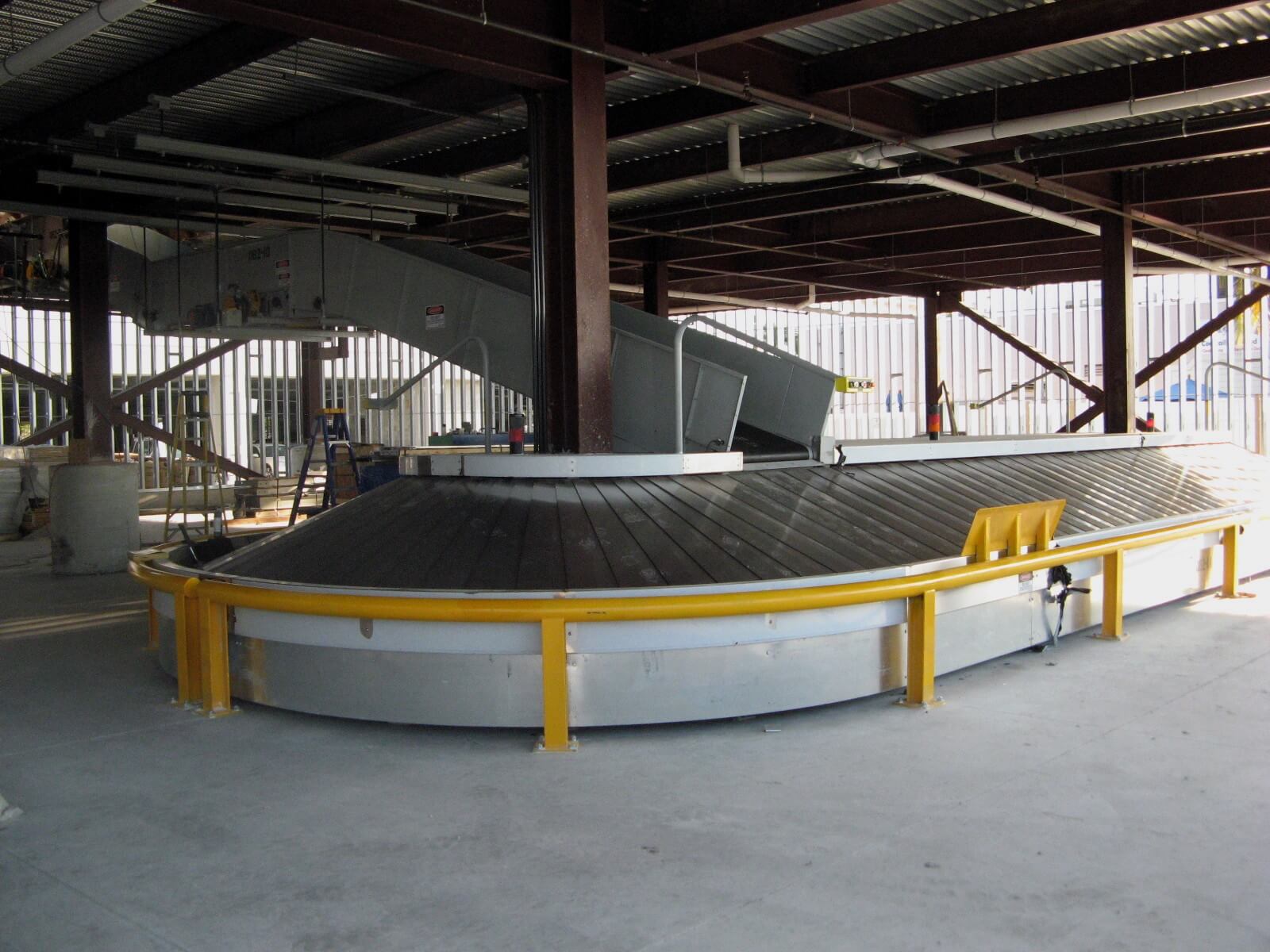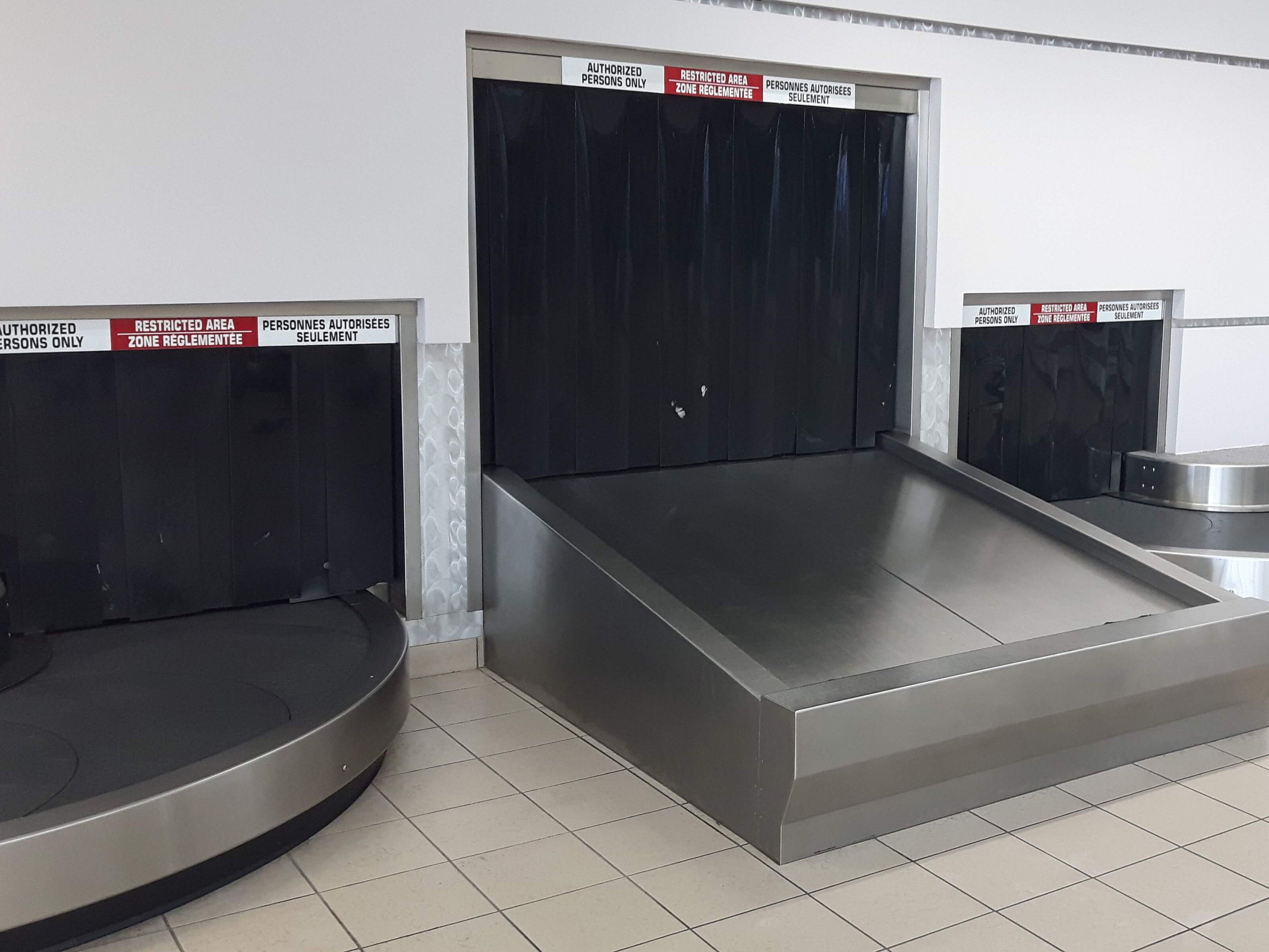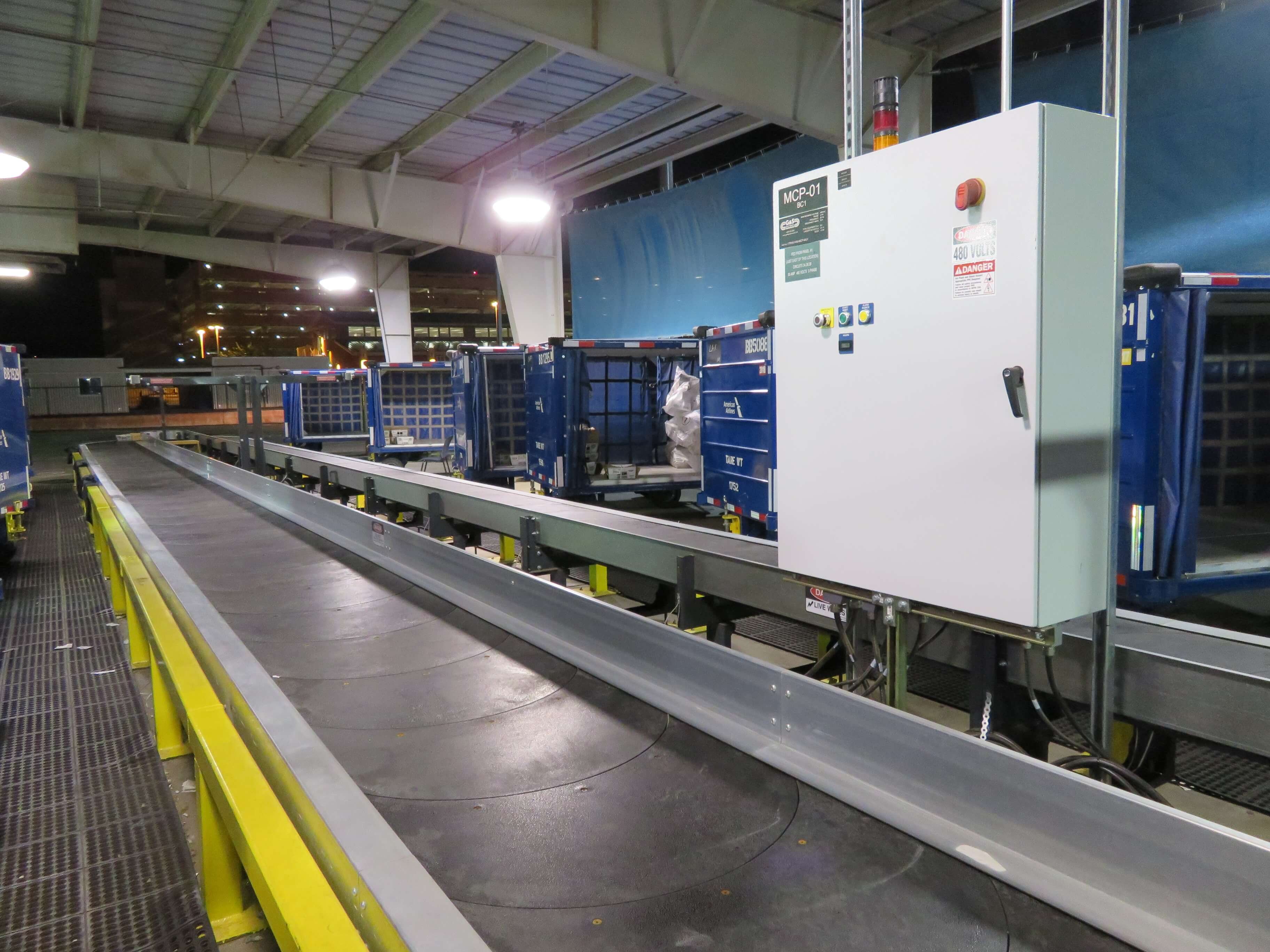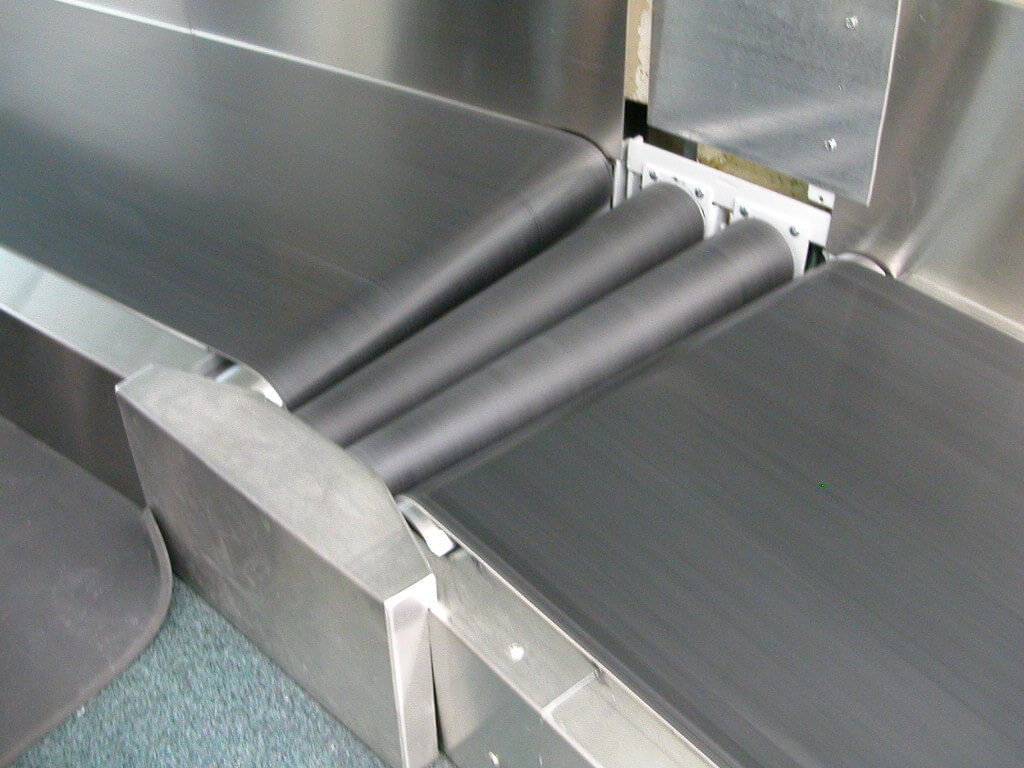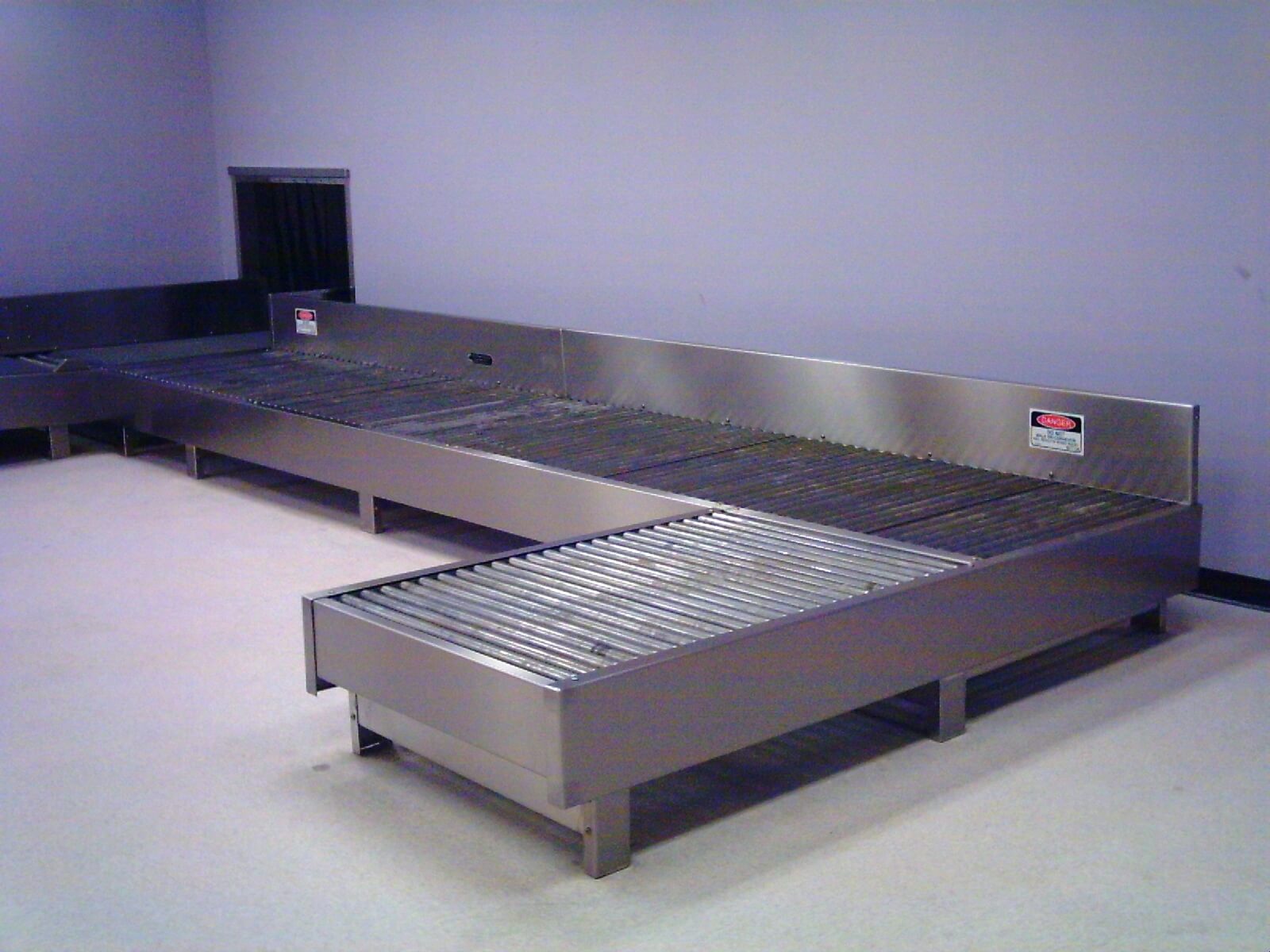Sortation Devices
Single Paddle Diverter (SPD)
The SPD sortation device is a gentle and efficient means of diverting baggage in airport baggage screening systems. The SPD redirects baggage effectively from the main line to a secondary line by means of a vertically oriented single paddle conveyor that is designed to pivot towards a discharge chute, forming a powered deflecting face oriented 45° to baggage flow. The unit is typically preceded by a series of queue conveyors, which control flow and optimize baggage spacing.
Horizontal Sortation Device (HSD)
The HSD redirects baggage effectively from the main line to a secondary line using two paddles designed to automatically pivot towards each other, aligning to form a powered deflecting face oriented 45° to baggage flow. Baggage is redirected onto a discharge chute and removed by out feed conveyors oriented at 45°, 90°, or 180° to the main line flow. To assist in flow control and to optimize baggage spacing, each HSD unit is typically preceded by a series of queue conveyors.
Heavy Duty Pusher (HDP)
This automatically actuated paddle is designed to push baggage as large as 120 pounds (54.43kg) and of varying sizes, including baggage tubs and golf clubs. The uniquely shaped paddle is designed with shock absorbing materials and a spring dampening system that provides a smooth, gentle diverting action.
Queue Conveyor
The queue conveyor is ideal for indexing, queuing, or separating baggage in systems that require flow management. This self contained, independent conveyor can either be placed in-line throughout merging and sortation systems, or can stand alone as a short conveyor.
Tip Chute
Ideal for re-inserting or merging baggage where one conveyor is positioned vertically above another. It is also suitable for loading baggage make-up devices such as the pallet loop conveyor.

